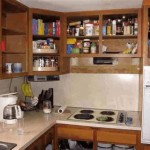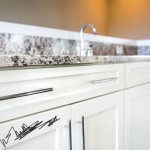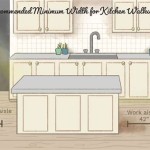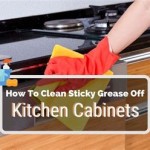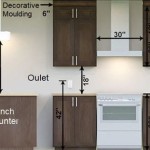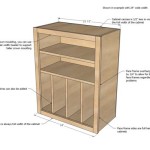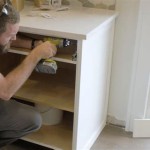Best Spray Paint for Laminate Kitchen Cabinets: A Comprehensive Guide
Laminate kitchen cabinets offer a cost-effective and durable solution for many homeowners. However, their appearance can become dated or worn over time. Refacing or replacing cabinets can be a significant expense. Spray painting laminate cabinets provides a viable alternative, rejuvenating the kitchen's aesthetic without incurring exorbitant costs. Selecting the correct type of spray paint and following proper preparation techniques are essential for achieving a long-lasting and professional finish.
The process of painting laminate cabinets differs significantly from painting solid wood. Laminate surfaces are non-porous, meaning paint does not readily adhere. Without proper preparation and the right product, the paint film will likely chip, peel, or scratch easily. This guide explores the best spray paint options available for laminate kitchen cabinets and provides detailed instructions for achieving a durable and attractive finish.
Adhesion Primers: The Foundation for a Lasting Finish
The single most crucial step in painting laminate cabinets is applying a high-quality adhesion primer. This primer acts as a bonding agent, creating a surface that the paint can grip effectively. Without a proper primer, even the best spray paint will fail to adhere properly to the slick laminate surface. Failure to prime correctly is the most common reason for paint failure on laminate cabinets.
Several types of adhesion primers are suitable for laminate, including those specifically formulated for glossy or non-porous surfaces. Epoxy primers are known for their exceptional adhesion and durability, making them an excellent choice for demanding environments like kitchens. Urethane primers also offer good adhesion and a smooth surface for topcoats. Shellac-based primers are another option, providing excellent adhesion and stain-blocking properties, but they may require more careful application and sanding.
Regardless of the type of primer chosen, it is imperative to follow the manufacturer's instructions meticulously. This includes proper surface preparation, application techniques, and drying times. Typically, the laminate surface must be thoroughly cleaned and degreased before applying the primer. Lightly sanding the surface with fine-grit sandpaper can also improve adhesion. Multiple thin coats of primer are generally preferable to a single thick coat, as this minimizes the risk of drips and uneven coverage. Sufficient drying time between coats, as specified by the manufacturer, is critical for ensuring the primer properly bonds to the laminate.
Choosing a tinted primer that closely matches the color of the topcoat can also improve the final appearance and reduce the number of coats required for full coverage. This is particularly beneficial when transitioning from a dark laminate color to a lighter paint color.
Selecting the Right Spray Paint: Durability and Finish
After priming, selecting the appropriate spray paint is the next critical step. Several factors should be considered, including the desired finish (matte, satin, semi-gloss, or high-gloss), the durability requirements of the kitchen environment, and the ease of application. Acrylic latex paints and alkyd paints are the most common choices for painting kitchen cabinets.
Acrylic latex paints are water-based and offer several advantages. They are low in VOCs (volatile organic compounds), making them environmentally friendly and safer to use indoors. They are also easy to clean up with soap and water. High-quality acrylic latex paints are durable and resistant to chipping and scratching, especially when combined with a good primer and topcoat. Acrylic latex paints are available in a wide range of colors and finishes, providing ample design flexibility.
Alkyd paints, also known as oil-based paints, offer exceptional durability and a hard, enamel-like finish. They are more resistant to wear and tear than acrylic latex paints, making them a good choice for high-traffic areas like kitchens. Alkyd paints provide excellent leveling, resulting in a smooth, professional-looking finish. However, alkyd paints have higher VOC content and require mineral spirits for cleanup. They also tend to yellow over time, especially in lighter colors.
When choosing between acrylic latex and alkyd paints, consider the specific needs and priorities. For homeowners prioritizing environmental friendliness and ease of cleanup, acrylic latex paints are a suitable choice. For those seeking maximum durability and a hard, glossy finish, alkyd paints may be preferable, provided the user is comfortable with the higher VOC content and the need for mineral spirits for cleanup.
Specialty spray paints, such as those formulated for furniture or cabinets, are also available. These paints often contain additives that improve adhesion, durability, and leveling. They may be more expensive than standard acrylic latex or alkyd paints, but the improved performance can justify the cost, especially for novice painters seeking a professional-looking result.
Regardless of the type of spray paint chosen, it is essential to use a paint specifically designed for interior use. Exterior paints are formulated to withstand the elements and may not be suitable for interior applications. They may also contain higher levels of VOCs and other chemicals that are not recommended for indoor environments.
Preparation is Key: Achieving a Professional Finish
Proper preparation is arguably the most important aspect of achieving a professional-looking finish when painting laminate cabinets. This involves thorough cleaning, sanding, and masking to create a clean, smooth surface that is conducive to paint adhesion. Rushing or skipping steps in the preparation process will inevitably lead to unsatisfactory results.
The first step is to remove all hardware, such as knobs, pulls, and hinges, from the cabinets. This will prevent paint from getting on the hardware and ensure a clean, professional finish. If the hinges are difficult to remove, they can be carefully masked off with painter's tape. However, removing the hinges is generally recommended for optimal results. All doors and drawers should be removed from the cabinet frames and laid flat on a protected surface for painting.
Next, thoroughly clean the laminate surfaces with a degreasing cleaner to remove any grease, dirt, or grime. Kitchen cabinets are often exposed to grease splatters and food stains, which can interfere with paint adhesion. A solution of trisodium phosphate (TSP) is an effective degreaser, but it should be used with caution, as it can be harsh on skin and surfaces. Alternatively, a commercially available degreasing cleaner specifically designed for kitchen use can be employed. Rinse the surfaces thoroughly with clean water and allow them to dry completely before proceeding.
Once the cabinets are clean, lightly sand the laminate surfaces with fine-grit sandpaper (220-grit or higher). This will create a slightly roughened surface that will improve paint adhesion. Sanding should be done gently and evenly, avoiding excessive pressure that could damage the laminate. The goal is to create a "tooth" for the primer to grip onto, not to remove the laminate finish entirely. After sanding, wipe the surfaces clean with a tack cloth to remove any sanding dust.
Masking is another crucial step in the preparation process. Use painter's tape to protect any areas that you do not want to paint, such as walls, countertops, or flooring. Apply the tape carefully and firmly, ensuring that it adheres tightly to the surfaces. Use drop cloths or plastic sheeting to protect the surrounding areas from overspray.
Finally, ensure adequate ventilation in the work area. Spray painting can release harmful fumes, so it is essential to work in a well-ventilated space. Open windows and doors, and use a fan to circulate the air. Consider wearing a respirator or mask to protect yourself from inhaling paint fumes.
By thoroughly preparing the laminate cabinets, homeowners can create a solid foundation for a successful painting project. A clean, smooth, and properly primed surface is essential for achieving a durable and attractive finish that will last for years to come.
Application techniques significantly impact the final appearance and durability of the painted cabinets. Using a high-quality spray gun is crucial for achieving a smooth, even finish. Both airless and HVLP (high volume, low pressure) spray guns are suitable for painting cabinets, but each has its advantages and disadvantages. Airless spray guns provide excellent coverage and are ideal for large projects, but they can produce a lot of overspray. HVLP spray guns produce less overspray and offer more precise control, making them a good choice for smaller projects or intricate details.
Regardless of the type of spray gun used, it is essential to practice your spraying technique before applying paint to the cabinets. Experiment with different settings and techniques until you achieve a smooth, even spray pattern. Hold the spray gun approximately 6-8 inches from the surface and move it in a smooth, even motion, overlapping each pass by about 50%. Avoid holding the spray gun in one place for too long, as this can cause drips and runs.
Apply multiple thin coats of paint, allowing each coat to dry completely before applying the next. This is preferable to applying a single thick coat, which can lead to drips, runs, and uneven coverage. Follow the manufacturer's instructions for drying times, and allow the paint to cure fully before reassembling the cabinets. Curing times can vary depending on the type of paint and the ambient temperature and humidity.
After the paint has cured, carefully remove the painter's tape and reassemble the cabinets. Inspect the painted surfaces for any imperfections, such as drips, runs, or uneven coverage. If necessary, lightly sand the imperfections with fine-grit sandpaper and touch up the paint. Replace the hardware and enjoy your newly refreshed kitchen cabinets.

What Is The Best Spray Paint On Kitchen Cabinets

How To Paint Laminate Kitchen Cabinets Perfect Finish Tips

The Best Spray Paint For Wood Furniture Rustoleum Behr Krylon Color Place

Kitchen Cabinet Painting Refinishing Spray Net

How To Paint Kitchen Cabinets Like The Pros

How To Create A High Gloss Kitchen

Kitchen Spray Painting The Facelift Company

How To Paint Laminate Kitchen Cabinets Perfect Finish Tips

How To Paint Kitchen Cabinets Like The Pros

Fantastic Article Best Spray Paint For Cabinets Amazing Spraymasters
Related Posts

